-
 Bitcoin
Bitcoin $105,641.3708
0.06% -
 Ethereum
Ethereum $2,536.3816
-1.10% -
 Tether USDt
Tether USDt $1.0004
0.00% -
 XRP
XRP $2.1497
0.21% -
 BNB
BNB $647.7244
-0.64% -
 Solana
Solana $145.9061
-0.86% -
 USDC
USDC $0.9999
0.00% -
 Dogecoin
Dogecoin $0.1781
0.13% -
 TRON
TRON $0.2722
0.39% -
 Cardano
Cardano $0.6275
-1.63% -
 Hyperliquid
Hyperliquid $40.5787
-2.94% -
 Sui
Sui $2.9833
-1.77% -
 Chainlink
Chainlink $13.2690
-0.40% -
 Bitcoin Cash
Bitcoin Cash $436.8960
-1.77% -
 UNUS SED LEO
UNUS SED LEO $9.1071
0.82% -
 Stellar
Stellar $0.2579
-0.46% -
 Avalanche
Avalanche $19.0519
-1.27% -
 Toncoin
Toncoin $2.9630
-1.62% -
 Shiba Inu
Shiba Inu $0.0...01214
0.53% -
 Litecoin
Litecoin $85.7989
-0.44% -
 Hedera
Hedera $0.1536
-3.01% -
 Polkadot
Polkadot $3.7912
-0.51% -
 Ethena USDe
Ethena USDe $1.0003
-0.01% -
 Monero
Monero $313.5553
1.28% -
 Dai
Dai $1.0000
0.00% -
 Bitget Token
Bitget Token $4.5263
-0.52% -
 Uniswap
Uniswap $7.4716
-1.35% -
 Pepe
Pepe $0.0...01105
-1.07% -
 Pi
Pi $0.6167
6.59% -
 Aave
Aave $276.1029
-4.42%
What should I do if the EMV indicator and the price diverge?
EMV divergence can signal potential market reversals, but confirmation with other tools like candlestick patterns or moving averages is essential for reliable trading decisions.
Jun 14, 2025 at 04:21 am
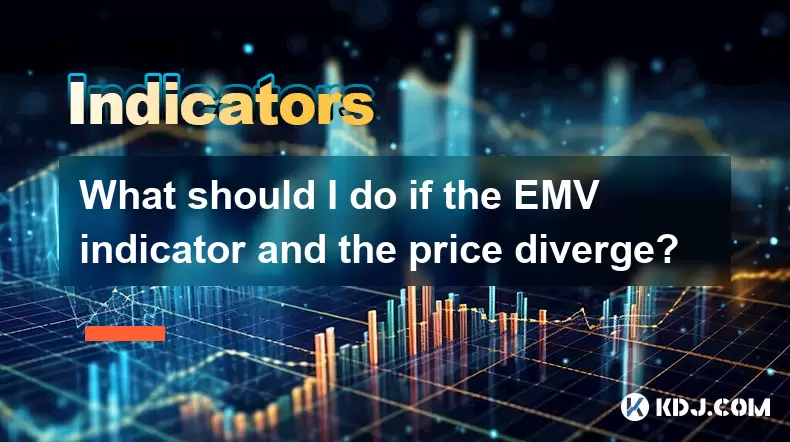
Understanding EMV and Price Divergence
The Ease of Movement (EMV) indicator is a volume-based technical analysis tool designed to measure the relationship between price change and volume. When the EMV indicator diverges from the price, it often signals potential reversals or shifts in market momentum. This divergence can occur in both bullish and bearish forms, depending on the direction of the price and EMV movement.
Bullish divergence happens when the price makes a lower low, but the EMV makes a higher low, suggesting that buying pressure may be increasing despite falling prices. Conversely, bearish divergence occurs when the price records a higher high while the EMV records a lower high, indicating weakening momentum behind the upward price movement.
Key Takeaway:
Recognizing the type of divergence is crucial before deciding on any trading action.Confirming the Divergence Signal
Before acting on an EMV and price divergence, traders should confirm the signal using additional tools or filters. Relying solely on EMV can lead to false signals, especially in volatile cryptocurrency markets.
- Use candlestick patterns to validate potential reversals. For example, a bullish engulfing pattern appearing at the same time as a bullish EMV divergence may increase confidence in a reversal scenario.
- Overlay moving averages, such as the 20-day or 50-day EMA, to filter out noise and identify trend strength.
- Incorporate other momentum indicators like RSI or MACD to cross-verify whether they also show similar divergence or overbought/oversold conditions.
Important Tip:
Always ensure that confirmation comes from independent sources rather than overlapping indicators that use similar calculations.Setting Up Entry Points Based on Divergence
Once a valid divergence has been identified and confirmed, the next step involves determining precise entry points for trades.
- For bullish divergence, wait for the price to break above a recent swing high or resistance level after the EMV line crosses above its signal line or moving average.
- For bearish divergence, look for a breakdown below a key support level or for the EMV to drop below its signal line before entering a short position.
- Use limit orders to enter the market at specific levels rather than chasing the price, especially in fast-moving crypto markets where slippage is common.
Critical Detail:
Avoid entering too early. Wait for price action confirmation to reduce the risk of premature entries.Managing Risk with Stop-Loss and Position Sizing
Even with a well-confirmed EMV divergence, there's no guarantee the trade will move in your favor. Proper risk management is essential.
- Place stop-loss orders just below the recent swing low in case of long positions or above the recent swing high for short positions.
- Adjust position size based on the distance to the stop-loss to avoid risking more than a predetermined percentage of your account on a single trade.
- Monitor volatility using tools like Bollinger Bands or ATR to adjust stop distances accordingly. In highly volatile assets like cryptocurrencies, wider stops might be necessary.
Essential Practice:
Never risk more than 1%–2% of your total capital on any single trade based on EMV divergence.Tracking Trade Progress and Adjusting Strategy
After entering a trade based on EMV and price divergence, continuous monitoring is required to assess if the initial thesis still holds.
- Observe how the EMV behaves post-entry. If it continues in the expected direction, this supports the trade idea. If it flattens or starts reversing, consider taking partial profits.
- Review volume patterns. Since EMV is volume-adjusted, a sudden spike or drop in volume could indicate changes in market sentiment.
- Reassess regularly using updated chart data. If new divergence appears or the trend weakens, it might be time to exit or adjust targets.
Smart Move:
Use trailing stops to lock in gains without manually exiting the entire position prematurely.Frequently Asked Questions
Q: Can EMV divergence be used effectively on all timeframes?
A: While EMV divergence can appear on any timeframe, it tends to be more reliable on higher timeframes like 4-hour or daily charts. Lower timeframes are prone to increased noise and false signals, especially in cryptocurrency markets.
Q: Is EMV divergence enough on its own to make a trade decision?
A: No, EMV divergence should not be used in isolation. It must be combined with other confirming factors such as candlestick patterns, moving averages, or other momentum oscillators to increase the probability of success.
Q: How do I differentiate between regular EMV fluctuations and actual divergence?
A: Actual divergence requires a clear mismatch between price extremes and corresponding EMV levels. Regular fluctuations lack this structural mismatch and tend to align with price movements more consistently.
Q: What cryptocurrencies respond best to EMV divergence strategies?
A: Larger-cap cryptocurrencies with sufficient volume, such as Bitcoin and Ethereum, generally provide clearer EMV signals due to more consistent volume profiles. Smaller altcoins may produce erratic EMV readings because of thin order books and irregular volume.
Disclaimer:info@kdj.com
The information provided is not trading advice. kdj.com does not assume any responsibility for any investments made based on the information provided in this article. Cryptocurrencies are highly volatile and it is highly recommended that you invest with caution after thorough research!
If you believe that the content used on this website infringes your copyright, please contact us immediately (info@kdj.com) and we will delete it promptly.
- The non-fungible token market has experienced another slump in April 2025
- 2025-06-15 10:25:12
- CZ Explains Hong Kong's Pro-Crypto Stance, Acting as a Sandbox for China
- 2025-06-15 10:25:12
- XRP Futures Ratio Hits 1-month Low as Shorts Outnumber Longs By a Considerable Margin
- 2025-06-15 10:20:11
- The U.S. Securities and Exchange Commission (SEC) has delayed its decision on several spot crypto ETFs
- 2025-06-15 10:20:11
- Gros Islet, Saint Lucia, Saint Lucia – Structural changes in the global trading landscape
- 2025-06-15 10:15:11
- Trump Media & Technology Group (TMTG) Is Developing a Utility Token to Power Truth+ Subscriptions
- 2025-06-15 10:15:11
Related knowledge
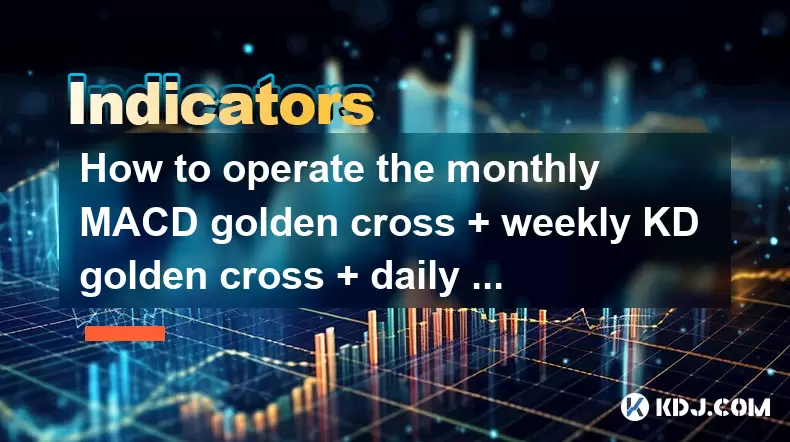
How to operate the monthly MACD golden cross + weekly KD golden cross + daily volume breakthrough?
Jun 15,2025 at 05:36am
Understanding the Strategy: Monthly MACD Golden CrossTo effectively operate the monthly MACD golden cross, traders must first understand what this signal entails. The MACD (Moving Average Convergence Divergence) golden cross occurs when the MACD line crosses above the signal line on a given chart timeframe. When this happens on the monthly chart, it sug...
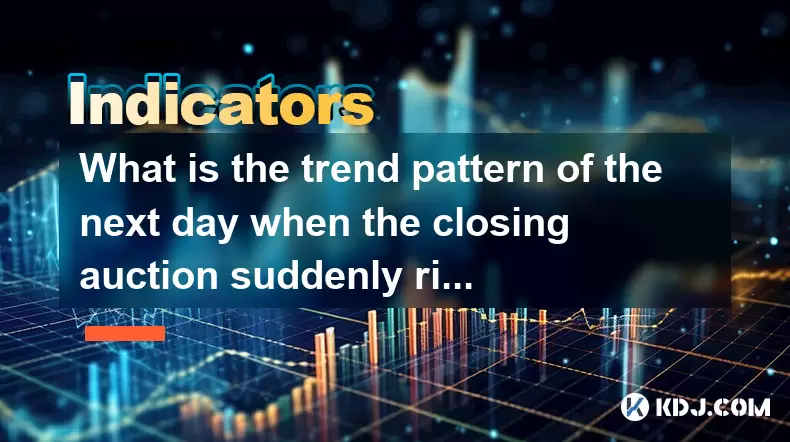
What is the trend pattern of the next day when the closing auction suddenly rises?
Jun 15,2025 at 08:15am
Understanding Closing Auctions in Cryptocurrency MarketsIn the context of cryptocurrency trading, a closing auction refers to a mechanism used by exchanges to determine the closing price of an asset at the end of a trading session. This process typically occurs within a short time window before the market closes for the day and aims to provide a fair an...

What does it mean when the volume fluctuates during the sideways trading at high levels?
Jun 15,2025 at 10:28am
Understanding Volume Fluctuations in Sideways TradingWhen volume fluctuates during sideways trading at high levels, it refers to the changes in the number of assets traded over a given period while the price remains relatively stable, moving within a defined range. This phenomenon typically occurs when the market lacks a clear directional bias—neither b...
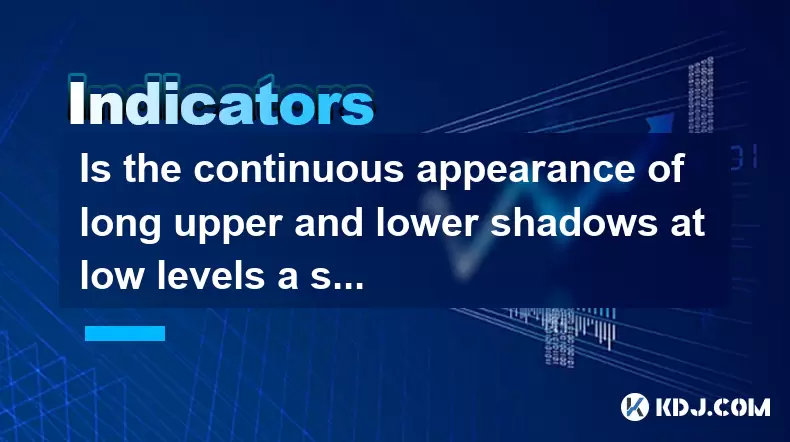
Is the continuous appearance of long upper and lower shadows at low levels a signal of accumulation?
Jun 15,2025 at 01:43am
Understanding Long Upper and Lower Shadows in Candlestick ChartsIn the world of cryptocurrency trading, candlestick patterns are widely used to analyze price movements. A long upper shadow, also known as a wick or tail, indicates that the price rose significantly during the period but was pushed back down by selling pressure. Conversely, a long lower sh...
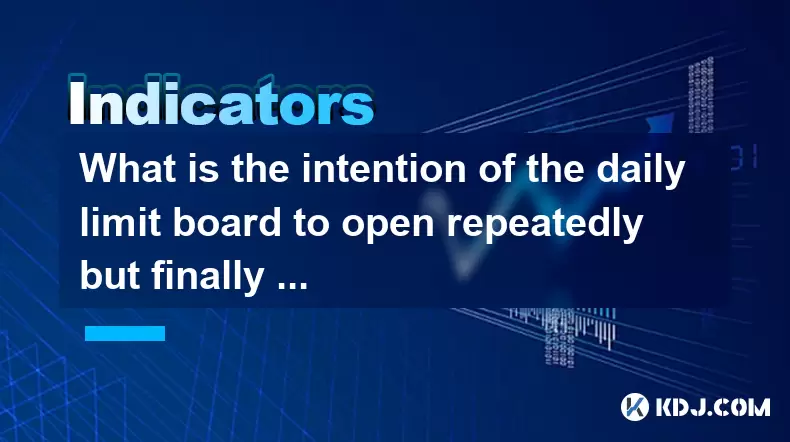
What is the intention of the daily limit board to open repeatedly but finally close?
Jun 15,2025 at 01:08am
Understanding the Daily Limit Board in Cryptocurrency TradingIn cryptocurrency trading, a daily limit board refers to a price movement restriction mechanism applied by certain exchanges or regulatory bodies. This mechanism is primarily used to prevent extreme volatility and panic selling or buying during periods of intense market fluctuation. When an as...

How to calculate the probability of trend continuation after the MACD column divergence?
Jun 14,2025 at 08:01am
Understanding MACD Column DivergenceThe Moving Average Convergence Divergence (MACD) is a widely used technical indicator in cryptocurrency trading. The MACD column, also known as the histogram, represents the difference between the MACD line and the signal line. When price makes a new high or low but the MACD histogram does not confirm this movement, a...

How to operate the monthly MACD golden cross + weekly KD golden cross + daily volume breakthrough?
Jun 15,2025 at 05:36am
Understanding the Strategy: Monthly MACD Golden CrossTo effectively operate the monthly MACD golden cross, traders must first understand what this signal entails. The MACD (Moving Average Convergence Divergence) golden cross occurs when the MACD line crosses above the signal line on a given chart timeframe. When this happens on the monthly chart, it sug...

What is the trend pattern of the next day when the closing auction suddenly rises?
Jun 15,2025 at 08:15am
Understanding Closing Auctions in Cryptocurrency MarketsIn the context of cryptocurrency trading, a closing auction refers to a mechanism used by exchanges to determine the closing price of an asset at the end of a trading session. This process typically occurs within a short time window before the market closes for the day and aims to provide a fair an...

What does it mean when the volume fluctuates during the sideways trading at high levels?
Jun 15,2025 at 10:28am
Understanding Volume Fluctuations in Sideways TradingWhen volume fluctuates during sideways trading at high levels, it refers to the changes in the number of assets traded over a given period while the price remains relatively stable, moving within a defined range. This phenomenon typically occurs when the market lacks a clear directional bias—neither b...

Is the continuous appearance of long upper and lower shadows at low levels a signal of accumulation?
Jun 15,2025 at 01:43am
Understanding Long Upper and Lower Shadows in Candlestick ChartsIn the world of cryptocurrency trading, candlestick patterns are widely used to analyze price movements. A long upper shadow, also known as a wick or tail, indicates that the price rose significantly during the period but was pushed back down by selling pressure. Conversely, a long lower sh...

What is the intention of the daily limit board to open repeatedly but finally close?
Jun 15,2025 at 01:08am
Understanding the Daily Limit Board in Cryptocurrency TradingIn cryptocurrency trading, a daily limit board refers to a price movement restriction mechanism applied by certain exchanges or regulatory bodies. This mechanism is primarily used to prevent extreme volatility and panic selling or buying during periods of intense market fluctuation. When an as...

How to calculate the probability of trend continuation after the MACD column divergence?
Jun 14,2025 at 08:01am
Understanding MACD Column DivergenceThe Moving Average Convergence Divergence (MACD) is a widely used technical indicator in cryptocurrency trading. The MACD column, also known as the histogram, represents the difference between the MACD line and the signal line. When price makes a new high or low but the MACD histogram does not confirm this movement, a...
See all articles

























































































